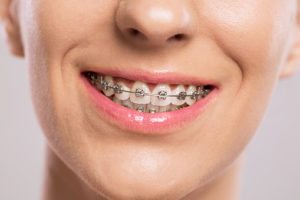There are many things to remember when you first get your braces. But don’t worry. We’ve created these Ortho Cheat Sheets to help you remember all the important stuff. Of course, if you have any questions, feel free to call our office.
Here Comes A Great Smile
Congratulations! You are on your way to a great smile.
You have been provided with an introductory “Survival Kit” that will help you keep your teeth clean and comfortable.
What to Expect:
• You may have soreness tonight and for several days. Soft foods will make eating more comfortable.
• Take what you normally take for a headache an hour before dinner and again when you wake up in the morning. Continue this as needed.
• If you have a “sore spot,” where braces are rubbing, dry the area with a napkin or a tissue and apply wax. Over-the-counter ointments are available to help with these areas.
• During the first few weeks, your lips will “toughen up” in response to your brackets.
• The most important part of your treatment is to keep your teeth clean. We reviewed this with you today, and we will help monitor your hygiene during treatment.
• Your treatment will be delayed if appointments are missed.
• If something is broken or loose, please let us know as soon as possible. We may need extra time to repair your appliances, so your treatment is not delayed.
• It is very important to return to your dentist for regular cleanings. In fact, we recommend seeing a dentist on a more frequent schedule.
• Follow your food list by avoiding hard and sticky foods. Biting on pens, fingernails, and ice cause the most damage.
• We will see you approximately every 4 – 6 weeks.
Please do not hesitate to call for any reason. We want to make this a great experience for you!
Think Before You Eat!
When you have braces, you do not have to give up all of your favorite foods. However, eating some types of foods can break or loosen your appliances and can lengthen your time of treatment.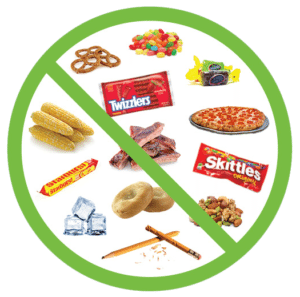
• Avoid chewing pens, pencils, and nails. These habits damage braces more than anything else.
• Avoid eating anything sticky or chewy. This includes taffy, caramel, Airheads, Skittles, jellybeans, Mentos, Jolly Ranchers, Starburst, licorice, and candy bars that have caramel in them to name a few.
• Avoid eating anything hard or crunchy. This includes hard candies, hard pretzels, pizza crust, nuts, and ice to name a few.
• Avoid biting into anything with a hard center. This includes ribs or chicken legs. Pull the meat off the bone before eating.
• Avoid “biting off” parts of food. Cut apples into small wedges and chew them with your back teeth. Also, you need to cut corn-on-the-cob off of the cob.
• Some foods are okay to eat, but require special directions! Break hard shell tacos into small pieces and chew with back teeth. Eat popcorn one or two kernels at a time. Cut fruits and veggies into small pieces and chew with back teeth.
If you have any questions regarding certain foods, please call us. If something is broken or loose, please call as soon as possible. Fixing broken appliances takes extra time that your regularly scheduled appointment may not offer.
Oral Hygiene While Wearing Your Braces
Why is excellent oral hygiene important during my orthodontic treatment?
In order for you to have the best smile ever, it is imperative for you to keep up with your oral hygiene! Teeth with braces on them need to have special attention paid to them in order to prevent potential problems. These potential problems include:
• Cavities
• Plaque and tartar build-up
• Decalcification
• Gingivitis
These problems not only cause serious damage to your teeth and gums but also delay your treatment—you may need to wear your braces longer! Problems such as cavities, plaque, and tartar build-up can be fixed by your dentist. Decalcification spots are permanent and cannot be removed!
Example of poor oral hygiene that occurred during treatment:
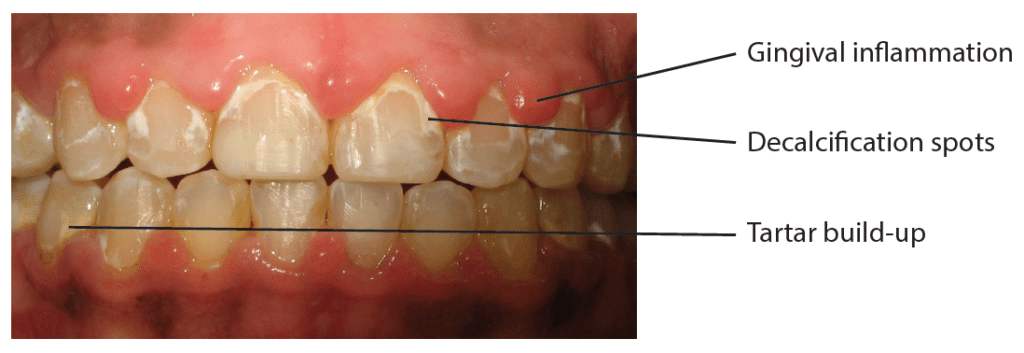
It is easy to avoid these problems as long as you brush your teeth carefully while you are in orthodontic treatment. Pay special attention to brushing around the brackets, underneath the archwire and your gums. Don’t forget to floss using your dental floss threaders! It is up to you to take care of your teeth so your smile is extra beautiful once your braces come off!
Expansion
When the upper jaw is narrower than the lower jaw (crossbite), an RPE, or Rapid Palatal Expander is needed. The upper jaw needs to be expanded (made wider) in order for the upper teeth to fit properly with the lower teeth.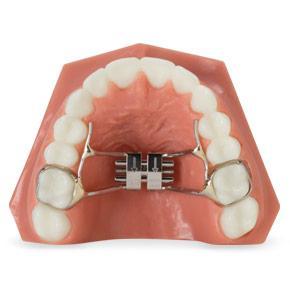
What to Expect: Activating the RPE won’t hurt, but your teeth may be uncomfortable for one or two days. Speaking, eating, drinking, and swallowing may be difficult for several days. The more you talk, the quicker this will improve. Soreness is to be expected; use whatever remedies you would use for a headache. Expect a space to develop between the front teeth of the upper jaw. This space will close by itself. Once this has happened, the area fills in with new bone and the jaw is wider.
Turning Instructions: The RPE is activated by the use of a small “key.” Place the “key” inside the small hole in the middle of your expander and push the key toward the back of the throat. Then, remove the key before bringing the key forward. This will expose the next hole to be ready for the next activation.
Your orthodontist will let you know how often to adjust or activate your RPE.
Hygiene Instructions: Brush as usual. Use water to flush out between the RPE and the roof of your mouth.
If you have any questions or concerns, please call.
Spacers (Separators)
Why do I need Spacers? 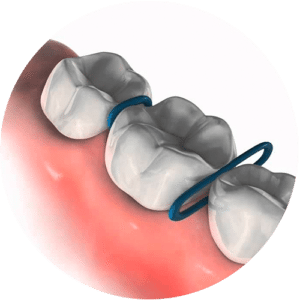
To create space between contacting teeth so that orthodontic bands may be fit to the molar teeth.
What do I do if a Spacer comes out?
Please contact our office so we can determine if replacement is necessary. If it is over the weekend, you may wait until Monday.
Do I need to eat or brush differently?
Brush normally but do not floss in the area where the spacers were placed. No sticky foods may be eaten because they will dislodge the spacers.
Do they hurt?
Moderate discomfort is typical. Take whichever medication you normally take for a headache.
Is there anything else that I should know?
Please do not play with the separators or pull them out. If the space closes, band placement may become uncomfortable.
Please do not hesitate to call for any reason. We want to make this a great experience for you!
Rubber Bands
Why do I need Rubber Bands?
The rubber bands that you have been given help align your upper and lower arches.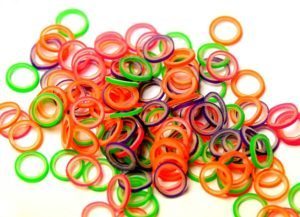
When do I change my Rubber Bands?
Change your rubber bands 4 times per day. Take them off before meals and replace with new ones after eating. Also place a new set before bed. After a certain length of time, the elastics lose their “STRETCH.” This is why it is necessary to use new ones each time you replace them.
What else should I expect?
Any discomfort you may experience usually fades after a few days if the rubber bands are worn as instructed. If you take them out on a regular basis to give your teeth a break, they will actually become more sore.
What do I do when I run out of Rubber Bands?
Call us and make plans to pick them up from our office, pick them up at the next appointment, or we can mail them to you.
Stick with it. You will get your braces off faster if you wear these as instructed.
Please do not hesitate to call for any reason.
Clear Retainers
Congratulations! Your braces are off. Together we have worked hard to move your teeth and give you a beautiful smile. Now we must maintain that great smile by using a retainer. The retainer keeps your teeth from moving back into their old position. Your job is to wear the retainer correctly.
How to Keep a Terrific Smile: 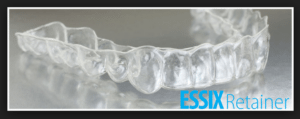
• Wear your retainer all day and night until instructed otherwise. Remove your retainer only when eating and brushing your teeth.
• When you are not wearing your retainer, always keep it in its case. (Retainers often break in pockets). Children and pets love retainers. Never wrap your retainer in a napkin; it may be accidentally thrown out (you don’t want to scavenge through garbage).
• Keep your retainer clean. As soon as you finish eating, brush your teeth and clean your retainer. Use a toothbrush without toothpaste to clean your retainer. Always replace your retainer as soon as you have cleaned it.
• It is important that the retainer keep its shape so your teeth will stay in their correct position. Be gentle when removing and replacing it. Avoid flipping it in and out with your tongue. The shape will become distorted, and your teeth will move. Replace and remove the retainer exactly as instructed.
• Your speech may sound strange for the first few days so keep talking, read out loud, and sing to the radio. The more you talk, the more quickly you will become accustomed to your retainer.
• Retainers can melt! If a liquid is too hot to drink, it is too hot for your retainer. Putting your retainer in the microwave, boiling water, or a hot car will cause it to melt and will ruin it.
• Avoid soaking your retainer in strong solutions such as bleach, 409, etc. These chemicals will distort its shape.
• Do not chew gum, taffy, or anything sticky while wearing your retainer. They will stick to it.
• There is a replacement fee of $150 for each lost retainer. Please call us immediately if you have lost or broken your retainer so we can replace it before your teeth move.
• Make sure to bring your retainer(s) to each follow-up appointment!
Bonded Retainers
You have received a bonded “permanent” retainer. Its purpose is to help maintain the alignment of your upper and lower front teeth since these are the teeth that tend to shift over time. They may slightly shift even with the retainer in place; this is normal and expected. It is very important that you understand your responsibility with this retainer. You must clean it properly and you must not bite into any hard foods or your retainers will break. 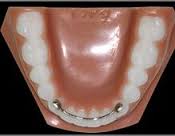
How do I clean with the retainer?
You will need to brush around the retainer thoroughly, similar to brushing around braces, and you will also need to FLOSS. In order to floss the mandibular teeth you will need a floss threader or super floss to guide the floss below the wire. Both can be found at any drugstore or large supermarket.
Are there any eating restrictions with these retainers?
YES! Since the retainers are bonded, or glued, to your teeth exactly like braces it is imperative that you do not bite into anything hard or you will dislodge your retainer (ie. apples, pears, candy bars, frozen foods etc.). All hard foods need to be cut and placed in the back of the mouth.
How long will I need to wear this bonded retainer?
As long as you want your teeth to stay straight. Without retention most teeth will continue to shift throughout life, even for those who did not have braces. This is a normal process and out of the control of the orthodontist. Therefore, we highly recommend indefinite retention as long as the retainers stay clean and the gums are healthy.
If you have any questions regarding your retainer or its instructions, please ask us.
The Amazing Tongue
Thank goodness we have a tongue and two lips! But too much of a good thing can cause trouble. A forward tongue position and a forward tongue thrust can cause serious bite problems. 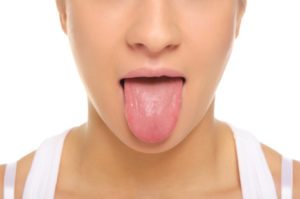
The tongue is stronger than our braces and will prevent us from obtaining an ideal result. It will also prevent the stability of a great orthodontic result. We need to retrain the tongue to be in a new position. This is difficult but worthwhile for the health and function of your bite and your teeth. Here are some ways to help:
Tongue Exercises: These exercises should be done as often as possible. The suggested minimum is at least five times a day. Hold the rubber bands provided against the roof of your mouth with your tongue. The rubber band should be just behind the upper teeth. This will help retrain the muscles to be in this position. You can also use sugar-free candy for this.
Reminders: Buy a special new ring or bracelet (it can be plastic) that will act as a reminder. Every time you see, feel, or think of this item, remember to place your tongue or lip in the correct position.
Please do not hesitate to call for any reason.
Thumbs Up...And Out! (Eliminate Thumb-sucking)
Thumb-sucking can be a hard habit to break. If thumb-sucking continues beyond the eruption of a child’s permanent teeth, problems may ensue with the proper growth of the mouth and tooth alignment. Your doctor will encourage you (or your child) to stop sucking your thumb and explain what could happen if you continue. However, many orthodontic patients need friendly reminders to help stop the habit. Here are a few ideas to help break your thumb-sucking habit:
Mavala Stop: You can order this product online. Mavala Stop has a bitter yet harmless taste that will take away the desire to continue the habit. Mavala Stop has the appearance of clear enamel, and stays on the nails or thumbs for a day or two. It can be used by adults and children. To use, apply a coat over the entire thumb, nail, etc and allow to dry. Repeat the application every two days. Continue the treatment until thumb-sucking has been stopped. (Never wash hands immediately after application.)
Reminders: In addition to Mavala Stop, other reminders include over-the-counter thumb habit paint (from drugstores), rings or thumb rings, and band-aids. Clean socks that are kept under the pillow, in the back seat of the car or on top of the TV can be placed over the hands when in these areas or any other place that the thumb sneaks into the mouth. If necessary, a thumb crib or other appliance may need to be temporarily attached in the mouth by your doctor to act as an even bigger deterrent. It is removed once the habit has ceased.
Rewards: Rewards sometimes help accomplish goals. A big reward can be effective and should be considered. Remember, whatever you buy will be less expensive than the increase in the cost of treatment if the habit is not stopped.
Sibling Rivalry: For parents, you can use sibling rivalry to your advantage. Consider a monetary reward. Every time a sibling catches a guilty thumb, they get a portion of the money. Losing part of this reward to a sibling can be a good incentive to stopping that thumb.
Positive Reinforcement: For parents with younger children, buy a poster-board and make it into a calendar. Decorate it so that it is a fun work of art. On days when the thumb sneaks into the mouth, place an X on that day. If the thumb has been kept out all day, place a smiley face.
Any of these ideas can work if used with enthusiasm, determination, and a positive attitude. Over time, thumb-sucking can lead to serious problems and can significantly affect speech, bite and appearance. In some cases, the habit could eventually result in the need for surgical correction. Stopping now will make your life much easier. We know you can do it!

